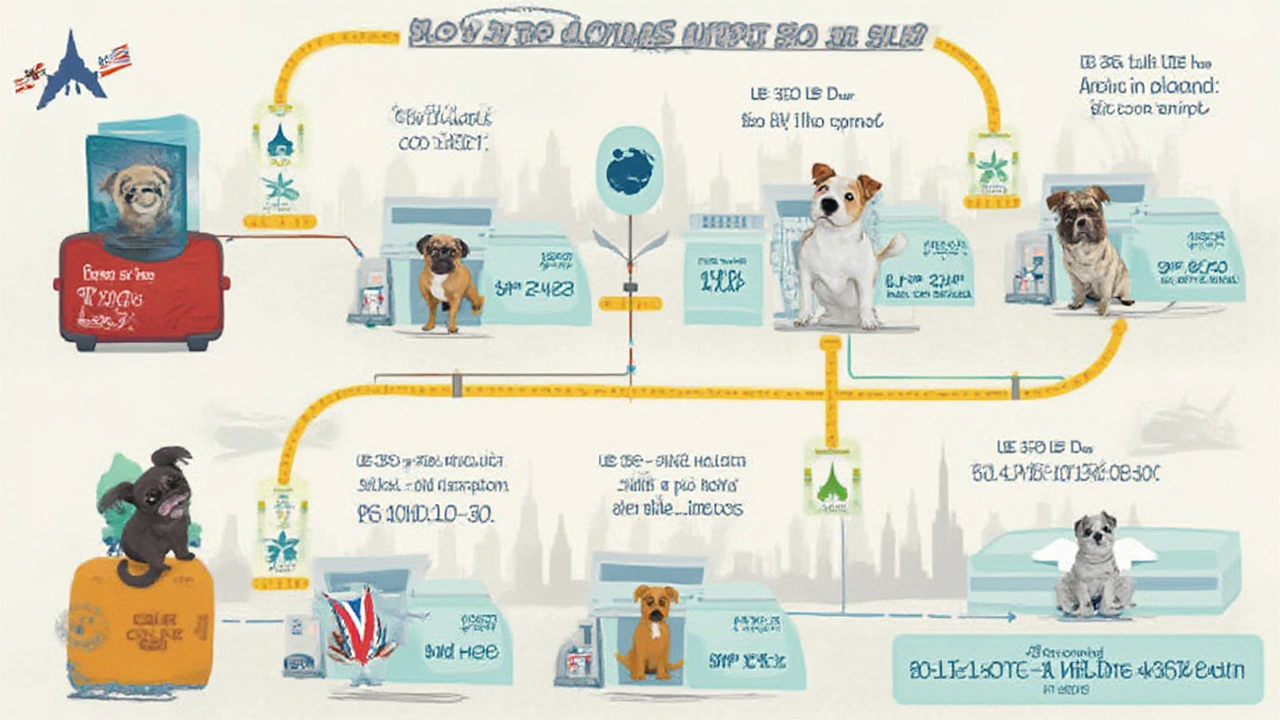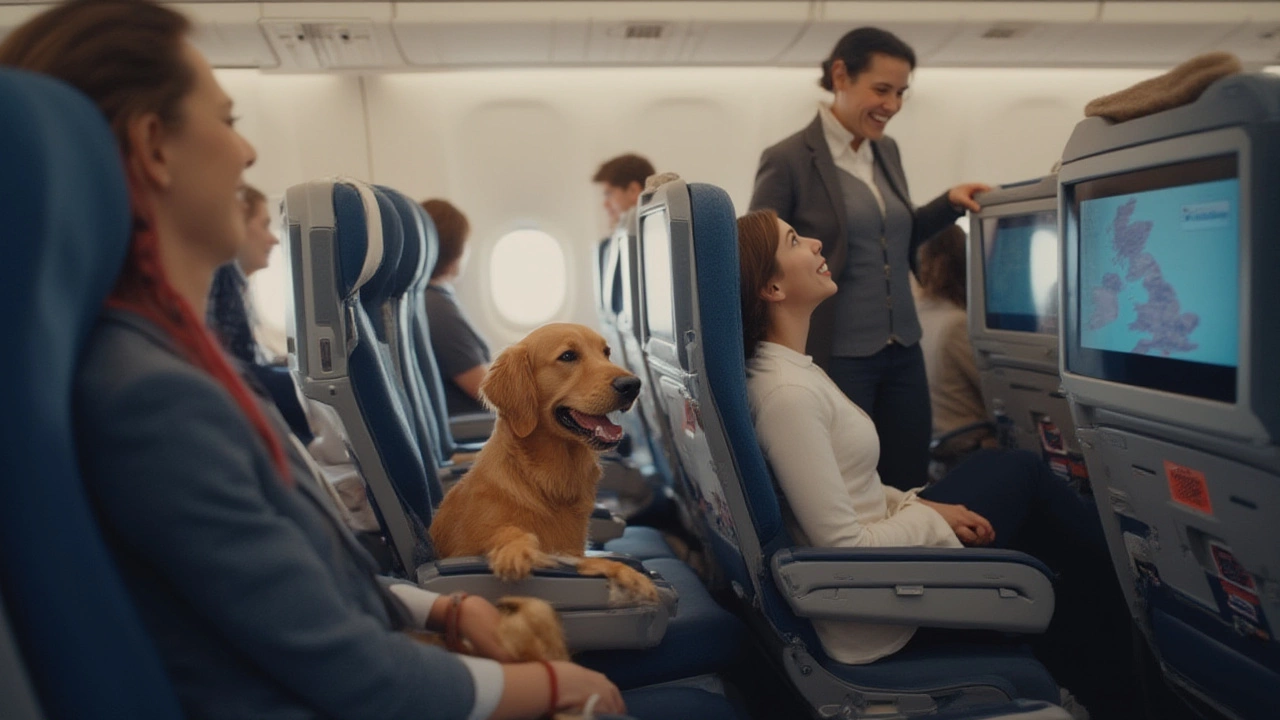Let’s get right into it: snapping up a plane ticket for your dog sounds as easy as online shopping for a new dog bed. Scroll, click, enter your info, and—boom—your best friend gets their own window seat, right? Not even close. The reality is way messier and actually, way more interesting. Airlines pull out every trick in their book to set limits—sometimes it feels like dogs are charged business class prices for coach benefits, and then there are airlines that won’t even let you try. But millions of people have flown with their furballs, navigating the maze of wonky regulations, high costs, and unexpected loopholes. Wanderlust for dogs is real, and so are the obstacles—and hacks to get around them. You hear all sorts of stories: Chihuahuas in handbags, a Newfoundland cozied up on a blanket like he runs the place, or a golden retriever reluctantly squeezed under a seat, all while their humans try to soothe whiskered nerves. The demand is clear, but the answer is crazier than most people expect.
The Official Airline Rules: Can You Buy Your Dog a Seat?
Walk into an airport terminal, and you’ll see “no pets beyond this point” signs everywhere, but then a dachshund tiptoes past in a pink carrier. So, is there some secret club for jet-setting dogs? Technically, it’s less glamorous. US carriers like Delta, American, United, Alaska, and Southwest all have official pet travel policies. Here’s the big catch: virtually zero commercial airlines let you buy a classic passenger seat just for your dog, unless your dog is an approved service animal. Most airlines draw a line—only service dogs trained to help with disabilities get to sit on the floor at your feet (and they need a lot of paperwork). Emotional support animals? They lost their special status in early 2021 when the US Department of Transportation changed the rules after too many llamas and peacocks showed up at boarding gates. For everyone else, dogs ride as “carry-on” in an airline-approved carrier under the seat or go in the cargo hold like checked baggage.
Some international airlines, especially smaller or pet-friendly ones, might let you book an extra seat—kind of. Lufthansa and Air France will sell a second ticket so *you* get more space, but the dog still has to stay in an under-seat carrier. The whole "fluffy in a belt and sunglasses seat 18A" dream isn’t real. Big dogs, from labs to huskies, are never allowed in the passenger cabin as a seatmate. The rules come down to safety, allergies, and complaints from other passengers. The FAA doesn’t actually ban dogs on seats, but airlines live in fear of bites, barking, and someone’s Spaniel taking a nap on a stranger’s shoulder. So much for a luxury upgrade!
The most up-to-date airline comparison table is below. Policies can change yearly, so always check directly before booking:
| Airline | In-cabin Dog Policy | Extra Seat Allowed? | Cargo Hold Option | Pet Fee (USD) |
|---|---|---|---|---|
| Delta | Carrier under seat (small dogs) | No (seat not for dog use) | Yes | 95 - 125 |
| American Airlines | Carrier under seat (small dogs) | No | Yes | 125 |
| United Airlines | Carrier under seat (small dogs) | No | Yes | 125 |
| Southwest | Carrier under seat (small dogs) | No | No | 95 |
| Lufthansa | Carrier under seat (small dogs) | Yes (for extra space only) | Yes | 60 - 125 |
So, before your dog dreams of their own safety demonstration, know this: You can generally only *buy a dog plane seat* on private charter flights, not on big commercial airlines. If you do want to buy an extra seat for yourself just to stretch out and keep your dog right by your side (under the seat still), then sure, the airlines are happy to take your money twice.
Private Jets: The Luxury Route for Pups With Passports
This is where things get wild. Money really does talk in the pet travel world. If you’ve ever scrolled through photos of a schnauzer wrapped in a Burberry blanket on a leather charter jet seat, that’s not just Instagram magic. Private jet companies, like NetJets or VistaJet, see the fur-flying, deep-pocket pet market and have designed their offerings around it. Dogs don’t just get "a seat"—they get an entire experience. Walk in, leash off, and suddenly your dog is curled up on the couch, eating gourmet treats (actual steak tartare was on the menu of one Dubai-London flight in 2022), or maybe even snuggled on your lap. You pay for comfort, and it can cost more than your mortgage.
Private charters and “pet jets” are so on trend that flying a dog in the cabin is now a hook for some jet-share programs. There’s even a company called K9 Jets, which specializes in booking seats for people and their large dogs—literally a shared private jet for pet parents. A typical fare: $8,000 per human seat, but your St. Bernard or greyhound can ride in luxury right next to you, uncrated, and stress-free. It’s extravagant, but people with horses who want to move their entire menagerie from New York to San Francisco actually do this. If you have the funds, this is the *only* surefire way to buy a traditional plane seat for your dog without all the hassle. Still, for 99% of us, that’s next-level bucket list stuff.

Tips for Booking the Comfiest Flight for Your Dog
Maybe you can’t swing $8,000 for a fancy dog jet in 2025, but that doesn’t mean you and your best friend are stuck on the ground. Here’s where strategy (and a little advance work) comes into play. First and most important: research every airline, every route, and every rule before booking. Airlines change pet policies *constantly*, especially after 2021 when the pet flying world turned upside-down. United once allowed dogs in-cabin to Australia—now you have to go through a third-party pet travel company, or your dog has to fly as checked luggage. Always call and ask detailed questions; online forms don’t cover every exception. Here’s a quick checklist that’s saved me multiple times:
- Measure your dog and carrier precisely—airlines are strict. If it won’t fit under the seat, it doesn’t fly in-cabin.
- Book direct flights whenever possible. Layovers mean more stress and more opportunities for things to go wrong.
- Pay the pet fee at booking. Spots for dogs (especially on smaller aircraft) are limited and sell out faster than exit row seats.
- If your dog is too big for in-cabin, research accredited pet shippers or ground transport as alternatives to the cargo hold which can be stressful and risky for some pets.
- Request a window seat near the wing—vibration is steadier here, which can relax anxious dogs.
- Bring familiar-smelling bedding and favorite toys to help your dog settle. Travel is scary for dogs, too.
- If possible, pick flights with cooler times of day—cargo holds can get dangerously hot during summer afternoons on the tarmac.
The devil really is in the details, so keep every receipt, vet certificate, and reservation email handy. Sometimes all it takes is a shift supervisor in a less-than-great mood, and suddenly you have to rearrange everything. And if you’re wondering if any airline will bend the rules if you show up with a sparkling personality and a well-dressed Corgi—don’t count on it. These rules are some of the most rigid in the entire travel industry.
The Cost Factor: Why Dog Plane Seats Are So Expensive
At first glance, you’d think bringing a dog on a plane is just a matter of paying a bit more. But when you add up all the hidden charges and extras, it can get out of hand fast. Stuff like pet fees (which average $125 one way for domestic US flights), vet certificates (especially for international travel), specialty carriers, airport pet relief area access, airline-specific pet booking charges, plus last-minute change fees. And that doesn’t even include any costs for extra seats if you want more space for yourself and your dog. Buying a separate seat for your dog—even if they’re not allowed on it—essentially doubles your airfare.
The crazy part? Airlines don’t give mileage points for pet fees. Your chihuahua will never reach gold status. Some airline reps have let it slip to me (after a very stressful, delayed flight with a senior rescue mutt) that pets are a "low priority unless you push hard." So make noise, be the squeaky wheel, and always confirm everything—twice.
For international travel, pet relocation agencies often charge thousands to handle flights, paperwork, and door-to-door service. You’re paying for expertise, nerves, and the all-important peace of mind. Some of my friends thought flying their Great Dane overseas would set them back about $1,000—it ended up being more like $6,500, not counting unexpected kennel stays and an airline mix-up. Budget airlines are less flexible; they often flat out say “no pets” to cut costs. It’s not unheard of for the family dog to end up on a small plane with a family member while everyone else takes the train.

Alternatives: Getting Your Dog to the Destination Without an Airline Seat
If you get blocked by airline restrictions or gasp at the price tag, there’s always a Plan B—and C, and D. Here are some tried-and-tested dog travel alternatives that people swear by:
- Driving – Hands-down the easiest way to keep your dog with you. Dogs love car rides, you set the pace, and there’s zero stress over paperwork. It’s not always practical for cross-country or international journeys, though.
- Trains – Some Amtrak routes now allow small dogs on trains, especially in pet-designated cars, for a set fee. They’re expanding options every year. European railways are even more dog-friendly (you’ll spot dogs sipping water at French train stations all the time).
- Specialty Pet Transport – Air charter companies, pet taxis, and relocation services cater specifically to moving animals safely and comfortably. They’ll handle airport pickups, customs, and more.
- Pet couriers – For a gentler touch or in emergencies, dedicated human couriers can fly with your dog as their "plus one" (usually in-cabin under the seat) and hand-deliver them at the destination—peace of mind for fur-parents with complicated routes or busy schedules.
Here's something I learned the hard way: whatever method you choose, double and triple-check timing, weather, pet weight limits, and carrier specs. Trust me, there’s nothing worse than showing up to the airport, paperwork in hand, only to hear “Sorry, your dog is too big for that carrier” after you already said your tearful goodbyes.
So, can you buy your dog a seat on a plane? Not on commercial flights—not unless your best pal is a bona fide service dog. But with cash, research, and a little creativity, you really can give them the travel adventure of a lifetime. The rules keep changing as more people fly with pets, so whoever cracks the code first—let me know. My goofy dog and I would love some extra legroom someday.
